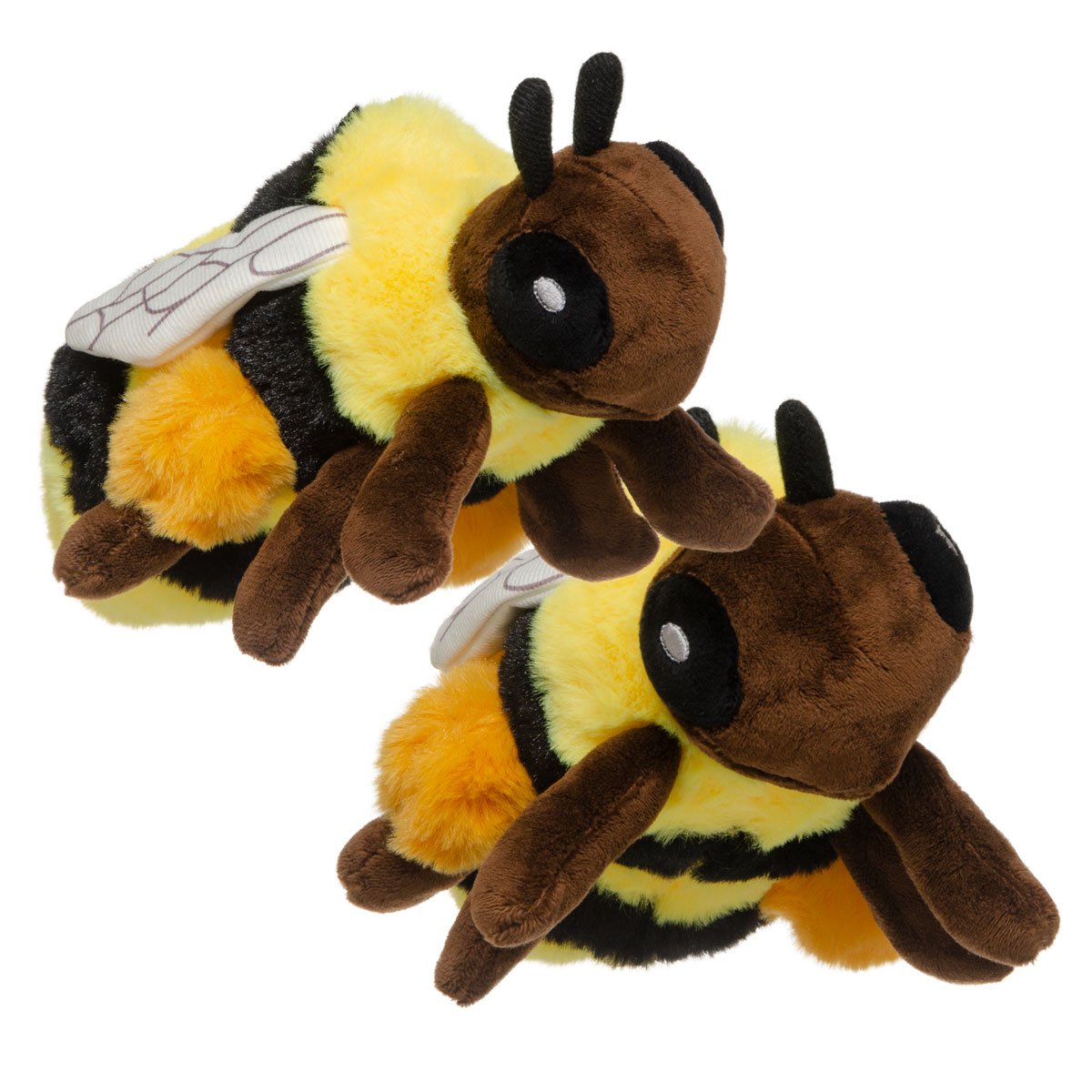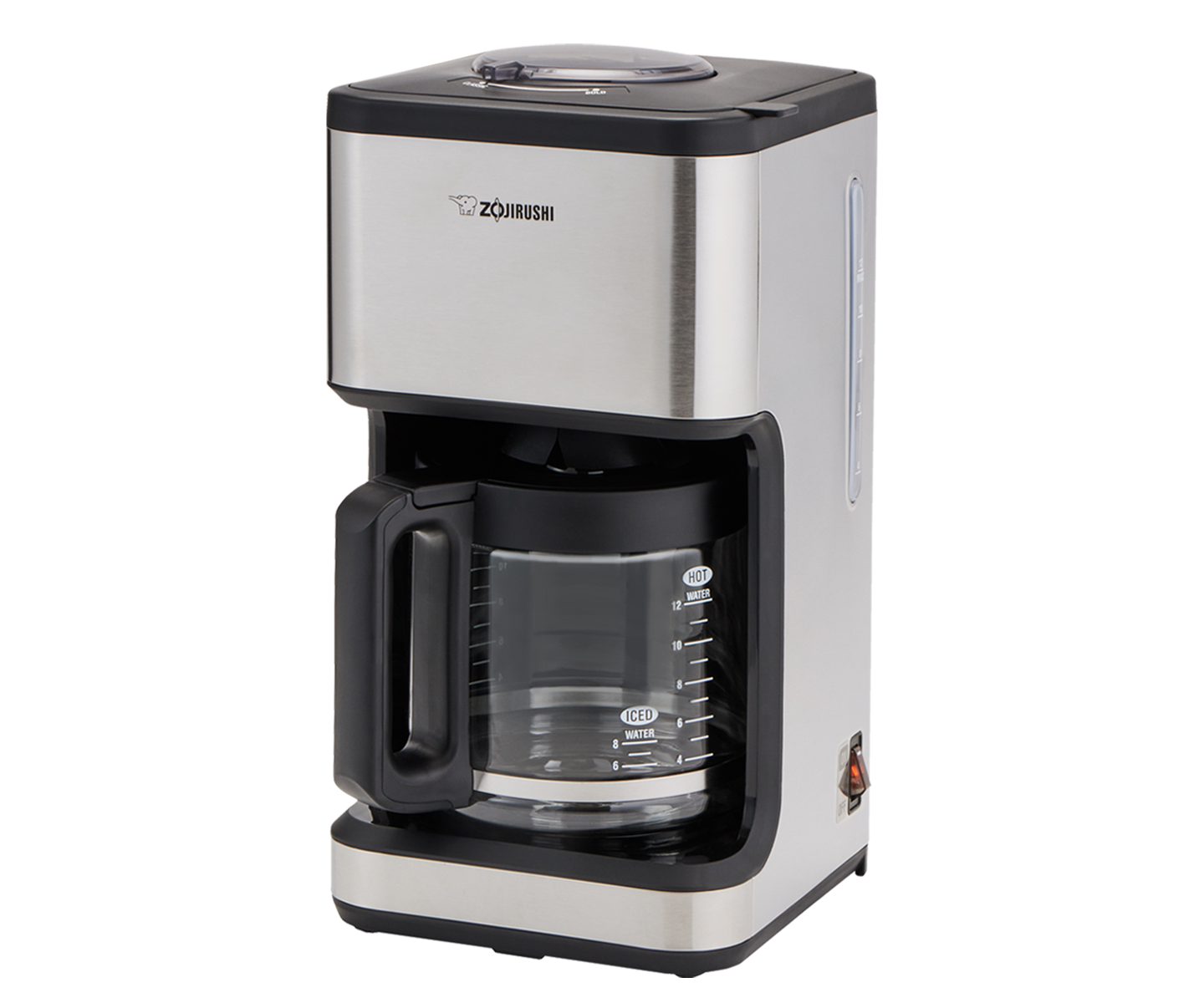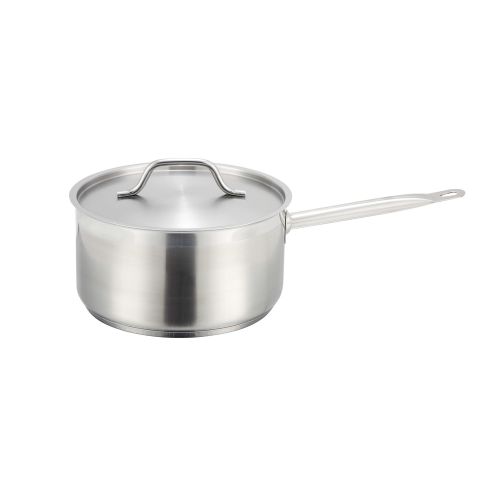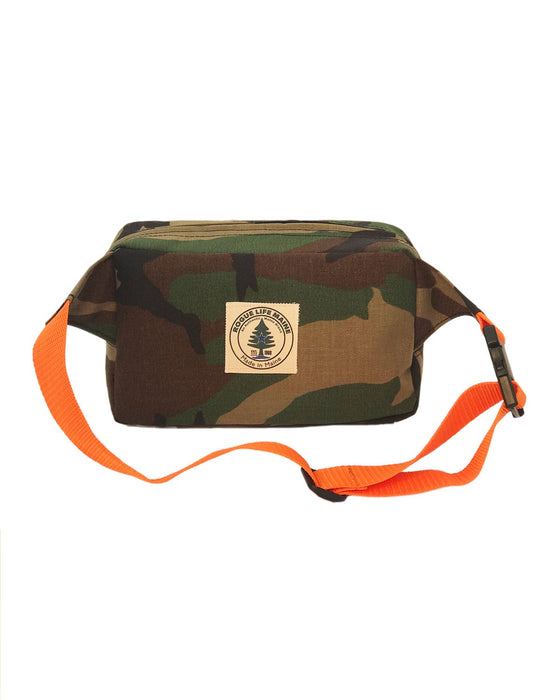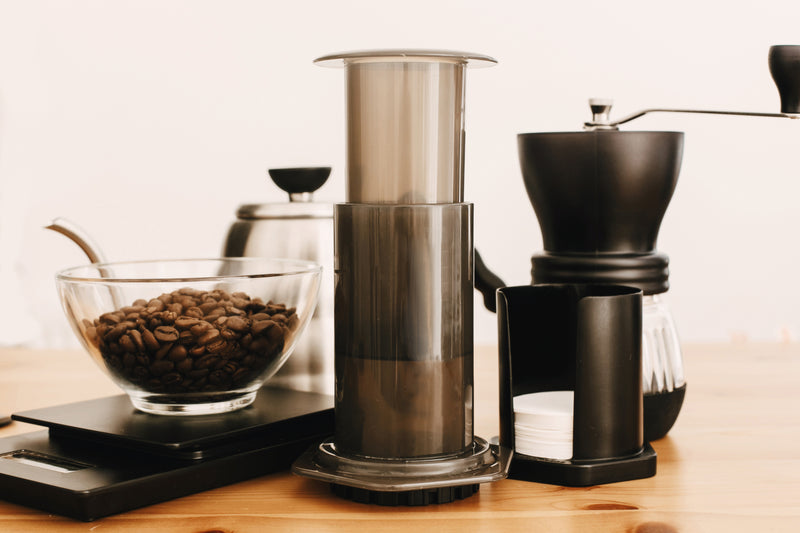
How to Make Coffee Without Filter: Detailed Guide for Perfect Brew
Price: $ 23.50
4.6(95)
Out of coffee filters and in need of a caffeine fix? No problem! In this detailed guide, we'll show you how to make coffee without a filter and still achieve the perfect brew. From using alternative brewing methods to making your own makeshift filter, we've got you covered. Get ready to enjoy a delicious cup of coffee, filter or no filter! Coffee Without a Filter Making coffee without a filter is an excellent way to explore various brewing methods and enjoy your favorite beverage in different ways. Here are some common alternatives to traditional filter coffee and how to use them: Turkish Coffee Turkish coffee is a traditional method that requires finely ground coffee and a small pot called a cezve. To make Turkish coffee, combine coffee grounds and water in the cezve, then bring the mixture to a boil.
Out of coffee filters and in need of a caffeine fix? No problem! In this detailed guide, we'll show you how to make coffee without.
Out of coffee filters and in need of a caffeine fix? No problem! In this detailed guide, we'll show you how to make coffee without a filter and still achieve the perfect brew. From using alternative brewing methods to making your own makeshift filter, we've got you covered. Get ready to enjoy a delicious cup of coffee, filter or no filter!
Coffee Without a Filter
Making coffee without a filter is an excellent way to explore various brewing methods and enjoy your favorite beverage in different ways. Here are some common alternatives to traditional filter coffee and how to use them:
Turkish Coffee
Turkish coffee is a traditional method that requires finely ground coffee and a small pot called a cezve. To make Turkish coffee, combine coffee grounds and water in the cezve, then bring the mixture to a boil over low heat. When a foamy layer forms on top, remove the pot from heat, and carefully pour the coffee into small cups, allowing a few minutes for the grounds to settle before drinking.
French Press
A French press, also known as a press pot, is a popular method for making coffee without a paper filter. To prepare coffee with a French press, simply add coarsely ground coffee to the press, pour hot water over the coffee grounds, and gently stir. Allow the coffee to steep for about four minutes, then press the plunger down, separating the grounds from the brewed coffee. Pour the coffee into your mug, and enjoy!
Cowboy Coffee
Cowboy coffee is a simple brewing method that requires only coffee grounds, water, and a saucepan. Place medium-grind coffee grounds in the saucepan with water, bring the mixture to a boil, then let it sit for a few minutes to allow the grounds to settle. Carefully pour the brewed coffee into your mug, making sure to avoid transferring the grounds.
Moka Pot
An Italian stove-top coffee maker, the Moka Pot, operates by passing hot water through coffee grounds using pressure to brew coffee. Fill the lower chamber with water, place medium-grind coffee in the filter basket, then screw the top chamber onto the base. Place the Moka Pot on the stovetop and heat until the brewed coffee fills the top chamber. Remove from heat, and pour the rich, flavorful coffee into your cup.
AeroPress
An AeroPress is a versatile brewing device that uses pressure to create a clean, flavorful cup of coffee without a paper filter. Add coffee grounds into the AeroPress chamber, pour hot water over the grounds, and stir. Attach the plunger and gently press down, extracting the coffee into your mug. AeroPress typically uses a metal filter, which allows more coffee oils and small particles to pass through, creating a fuller-bodied brew.
Chemex
The Chemex is a pour-over coffee maker that uses a thick, cone-shaped paper or reusable metal filter for brewing. Add medium-coarse coffee grounds to the filter, then pour hot water over the grounds in a slow, circular motion, ensuring all the grounds are saturated. The brewed coffee will collect in the bottom half of the Chemex. Once the brewing process is complete, remove the filter and enjoy your coffee.
With these diverse brewing methods, enjoying coffee without a filter has never been easier. Each method brings unique flavor profiles and characteristics to your cup, allowing you to appreciate coffee in entirely new ways.
Homemade Filter Alternatives
There are several creative ways to make coffee without a conventional filter. In this section, we will explore homemade filter alternatives, such as paper towels, cheesecloth, socks, reusable tea bags, and handkerchiefs. These substitutes can be just as effective at brewing a delicious cup of coffee.
Paper Towel
Using a paper towel as a makeshift coffee filter is a simple and readily available option. To do so, place a paper towel over the filter basket in your coffee machine, pressing it down gently. You can add a little water to help the paper towel stay in place. Then, add your coffee grounds to the paper towel without overfilling. Proceed to brew your coffee as usual.
Cheesecloth
Cheesecloth is another suitable coffee filter substitute due to its fine mesh structure. Cut a piece of cheesecloth large enough to cover your coffee maker's filter basket or container. Add your coffee grounds, being cautious not to overfill. Pour hot water onto the grounds and let the coffee pass through the cheesecloth, collecting in your container below.
Sock
Using a clean sock as a coffee filter may sound unconventional, but it works surprisingly well. Choose a sock or stocking made of natural fibers for best results. Insert the sock into a container, such as a coffee mug, ensuring it is fully open. Add your coffee grounds to the sock, then slowly pour hot water over the grounds. The brewed coffee will collect in the container as it passes through the fabric.
Reusable Tea Bag
Empty tea bags, especially those made from natural fibers, can also double as makeshift coffee filters. Fill the tea bag with your desired amount of coffee grounds and place it in a cup or pot. Boil water separately, let it cool for about 30 seconds, then pour it over the tea bag in the pot. Allow the coffee to steep for 3-4 minutes before removing the tea bag.
Handkerchief
A clean handkerchief or cloth napkin can serve as another effective coffee filter alternative. Place the handkerchief over a container, letting the edges hang over the side. Add coffee grounds to the center of the handkerchief, then slowly pour hot water over the grounds. The brewed coffee will pass through the fabric and collect in the container below.
These homemade filter alternatives provide cost-effective and accessible ways to enjoy your favorite brew without the need for traditional coffee filters. Using materials such as paper towels, cheesecloth, socks, reusable tea bags, or handkerchiefs, you can still achieve a delicious cup of coffee without compromising flavor or quality.
Cold Brew Methods
There are multiple ways to create cold brew coffee without using a filter. In this section, we will explore the methods of making cold brew and cold-brew coffee at home, ensuring they are easy to follow and result in a delicious caffeinated concoction.
Cold Brew Coffee
To make cold brew coffee without a filter, you can use alternative straining materials such as a cheesecloth or a fine mesh strainer. This method involves steeping coffee grounds in cold water for an extended period, which produces a smooth and low-acid beverage. Follow these simple steps:
Measure 3 ounces of coarse ground coffee beans.
Add the coffee grounds and 24 ounces of cold water to a pitcher, jar, or large measuring cup.
Stir well to ensure that the coffee grounds are evenly saturated with water.
Cover the container and let it sit at room temperature for 12 to 24 hours. During this time, agitate the mixture occasionally to promote even extraction.
After the steeping period, strain the coffee to separate the grounds from the liquid. A cheesecloth or a fine mesh strainer will effectively remove the grounds and give you a clean and sediment-free cold brew.
Refrigerate the strained coffee concentrate, and dilute it according to your taste preferences before serving. A commonly recommended ratio is 1 part cold brew concentrate to 2 or 3 parts water or milk.
Cold-Brew Coffee
Another variation of cold brew, cold-brew coffee, follows a similar process but may incorporate different brewing ratios or serving methods. Here is a step-by-step guide for making cold-brew coffee:
Start by using a brewing ratio of 1:4 or 1:8 (1 part coffee for every 4 to 8 parts water), depending on whether you plan to dilute the final product with water or milk.
Add the coarsely ground coffee and cold water to a clean container, and stir the mixture to combine.
Let the container sit at room temperature for 18 to 20 hours. Regular agitation will help ensure consistent flavor extraction.
When the steeping period is complete, strain the coffee through a fine mesh strainer or a cheesecloth to remove the grounds.
If you prefer hot coffee, you can add boiling water to the cold-brew concentrate. Use a ratio of approximately 1:3 (1 part cold-brew coffee to 3 parts hot water).
Experiment with different coffee-to-water ratios, steeping times, and serving styles until you find the perfect cold brew or cold-brew coffee for your taste buds. Remember, making coffee without a filter is not only possible but often results in a delicious and smooth beverage that can be enjoyed at any time.
Instant Coffee Preparation
Preparing instant coffee is a quick and simple method for those who want a hassle-free coffee-making experience without using a filter. Instant coffee, also known as soluble coffee, is made from brewed coffee beans that have been freeze-dried or spray-dried into a fine powder. This process preserves the taste and aroma of the coffee, making it convenient for those who want to enjoy coffee without brewing it from scratch.
To start, gather the necessary items, which include instant coffee powder, hot water, a mug, a teaspoon or measuring spoon, and any preferred additives such as sugar, milk, or cream. The recommended ratio for instant coffee is about 2 grams of instant coffee powder for every 200 milliliters of water, but this can be adjusted according to taste preferences.
First, heat water in a kettle or microwave until it reaches a boiling point, then pour a small amount of the hot water into the mug to preheat it. This can help maintain the temperature of the coffee for a longer period. Swirl the water around the mug and then discard it before adding the desired amount of instant coffee powder.
Next, fill the mug with the remaining hot water, making sure to leave some room for any cream or milk if desired. Stir the coffee until the instant coffee granules fully dissolve to ensure a smooth, even texture. Taste the coffee, and if required, adjust the amount of coffee powder, water, or additives to reach the desired strength and flavor.
When adding milk, cream, or sugar, it's best to do so gradually, as excessive amounts can overwhelm the taste of the coffee. Keep in mind that certain instant coffee powders may already contain some creamer or sweetener, so be sure to check the packaging for any additional instructions or recommendations.
In summary, instant coffee preparation provides a convenient and easy-to-prepare alternative to traditional brewing methods, requiring only a few basic ingredients and tools. By following these simple steps, anyone can create a satisfying cup of coffee in no time, without the need for a coffee filter.
Coffee Filtering Devices
There are multiple options when it comes to coffee filtering devices that don't require traditional paper filters. Below are six common and alternative methods for preparing coffee without relying on disposable filters. Each device offers its own unique way of brewing coffee while maintaining its flavor and sustainability.
Drip Coffee Maker
A drip coffee maker is a popular means of brewing coffee, and it is possible to use it without a paper filter. Instead of a disposable filter, you can use paper towels or unbleached paper to keep the coffee grounds from passing through the filter basket. Simply cover the filter basket with a paper towel, pressing down to create an indentation for the coffee grounds, and then proceed to add the grounds and water as you normally would.
Reusable Filter
A reusable filter is a great alternative for those looking to go green and reduce their waste. These filters are typically made of metal or cloth and are designed to fit perfectly in your coffee maker, allowing the water to pass through the grounds while holding them in place. Simply insert the reusable filter into your coffee maker's filter basket, add the coffee grounds, and proceed with the brewing process.
Mesh Sieve
Using a mesh sieve as a coffee filtering device can be done similarly to steeping tea. Place a mesh sieve, or any fine strainer, over a mug or coffee pot, and add two tablespoons of ground coffee to the sieve. Boil water in a kettle, and once heated, pour it over the coffee grounds in the sieve. Allow the coffee to steep for four to five minutes before removing the sieve and enjoying your coffee.
Reusable Coffee Filter
Another option for a reusable coffee filter is a silicone or cloth coffee cone, designed for pour-over brewing methods. These filters are easy to clean and allow water to pass through the coffee grounds while preventing them from entering your cup. To use a reusable coffee cone, place it over your mug or coffee pot, add the coffee grounds, and pour hot water over them using a slow, circular motion.
Mesh Strainer
If you have reusable tea bags or strainers, you can also use them to make coffee without a filter. Fill the tea bag or strainer with finely ground coffee, seal it, and place it in your mug or coffee pot. Pour hot water over the tea bag or strainer and allow it to steep for a few minutes, similar to the mesh sieve method mentioned earlier.
Nut Milk Bag
A nut milk bag can also be used to brew coffee without a traditional filter. This method involves steeping coffee grounds directly in hot water and then straining the mixture through the nut milk bag. Add your desired amount of coffee grounds to hot water and let it steep for approximately four minutes. After the steeping time has passed, pour the liquid through the nut milk bag into a mug or coffee pot, separating the grounds from the coffee.
Each of these coffee filtering devices offers an alternative to disposable paper filters, giving you more sustainable options for brewing your favorite cup of coffee. By exploring these methods, you can choose the one that best suits your needs and preferences, all while reducing your environmental impact.
Selecting Coffee Powder
When making coffee without a filter, it is essential to select the right coffee powder to achieve the desired taste and quality. The choice of coffee powder greatly influences the final outcome of your brew, ensuring a delightful experience.
Coffee Powder
For filter-less coffee preparations, it is recommended to use coarsely ground coffee as this will allow the water to effectively extract the flavor without making the coffee too muddy. Fine grounds are not ideal since they can easily seep through makeshift filters or strainers, resulting in a cloudy and over-extracted beverage.
While selecting coffee powder, it is important to consider the type of coffee beans used, the roast level, and the grind size, as they all contribute to the flavor and aroma of your coffee. You may choose between Arabica and Robusta beans, or opt for a blend of both, depending on your preference. The roast level, whether light, medium, or dark, also plays a significant role in determining the taste, body, and acidity of the coffee.
If you are looking to make Turkish coffee without a filter, it is essential to use the finest coffee powder available. Turkish coffee requires finely-ground coffee powder, which can easily dissolve in water and create a distinct and rich flavor. Keep in mind that, unlike other methods, the coffee grounds will remain in the final drink, so it is important to use a powder suitable for this purpose.
Mud coffee, another filter-less option, can be made using coarsely ground coffee. The process involves boiling water and coffee grounds in a pot, then allowing the coffee mud to settle on the bottom. Coarse grounds work better for this method as they sink faster, and the coffee does not get excessively bitter.
In conclusion, selecting the right coffee powder is essential for making delicious coffee without a filter. Considering the factors mentioned above and experimenting with different coffee beans, roast levels, and grind sizes will ultimately help you find the perfect combination for your filter-less brew.
Conclusion
In summary, making coffee without a filter is a viable option for those who want to enjoy a rich, full-bodied flavor or are looking for sustainable alternatives to disposable filters. Several methods can be used to achieve this, such as using a French press, percolator, or even the Turkish coffee technique.
Experimenting with different brewing techniques, bean types, and grind sizes can help you find the perfect recipe to suit your taste preferences. It is essential to adjust the water-to-coffee ratio, steeping time, and temperature to create the desired strength of your coffee, as these will vary depending on the chosen method.
Here are a few key takeaways for making coffee without a filter:
Choose a brewing method that suits your taste preferences and equipment available.
Use the right grind size for your chosen method, such as medium-grind for boiling, coarse grind for French press, or fine powder for Turkish coffee.
Adjust water-to-coffee ratio, steeping time, and temperature to create your desired brew strength.
Allow coffee grounds to settle before serving, or use a strainer to avoid sediment in the final cup.
By following these tips and experimenting with brewing methods, you can enjoy the full benefits of making coffee without a filter. Not only does this method provide some unique, bold flavors, but it also encourages eco-friendliness and sustainability by reducing waste from disposable filters. So, go ahead and explore these various techniques to find your perfect cup of filter-free coffee.

How to Brew Coffee with the OXO 8-Cup Coffee Maker
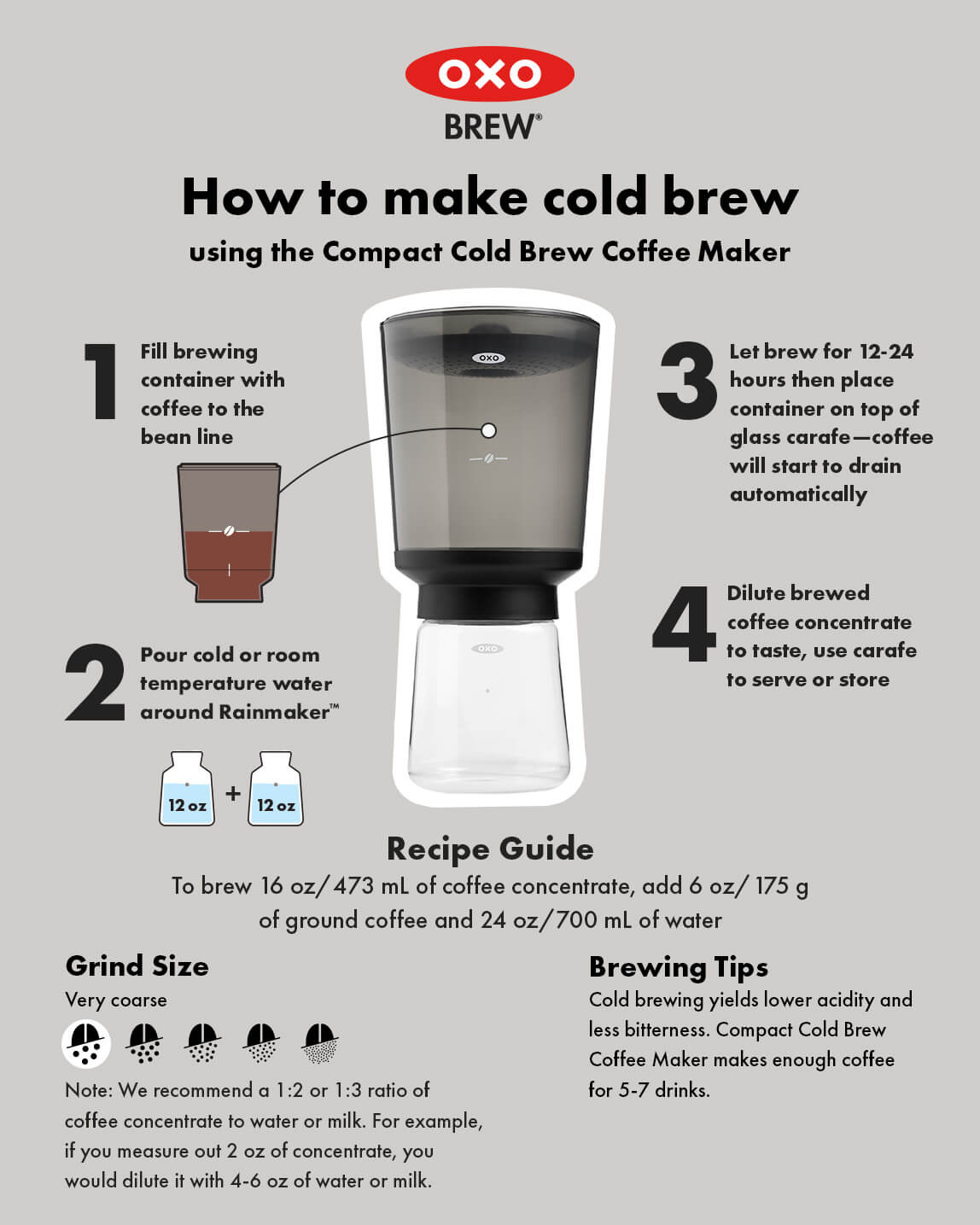
OXO Compact Cold Brew Coffee Maker Instructions
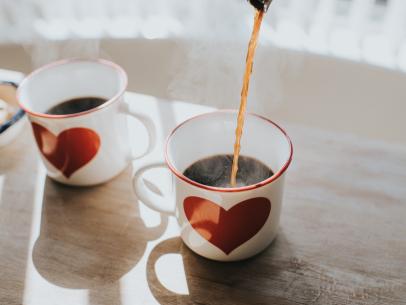
How to Make Coffee Without a Coffeemaker
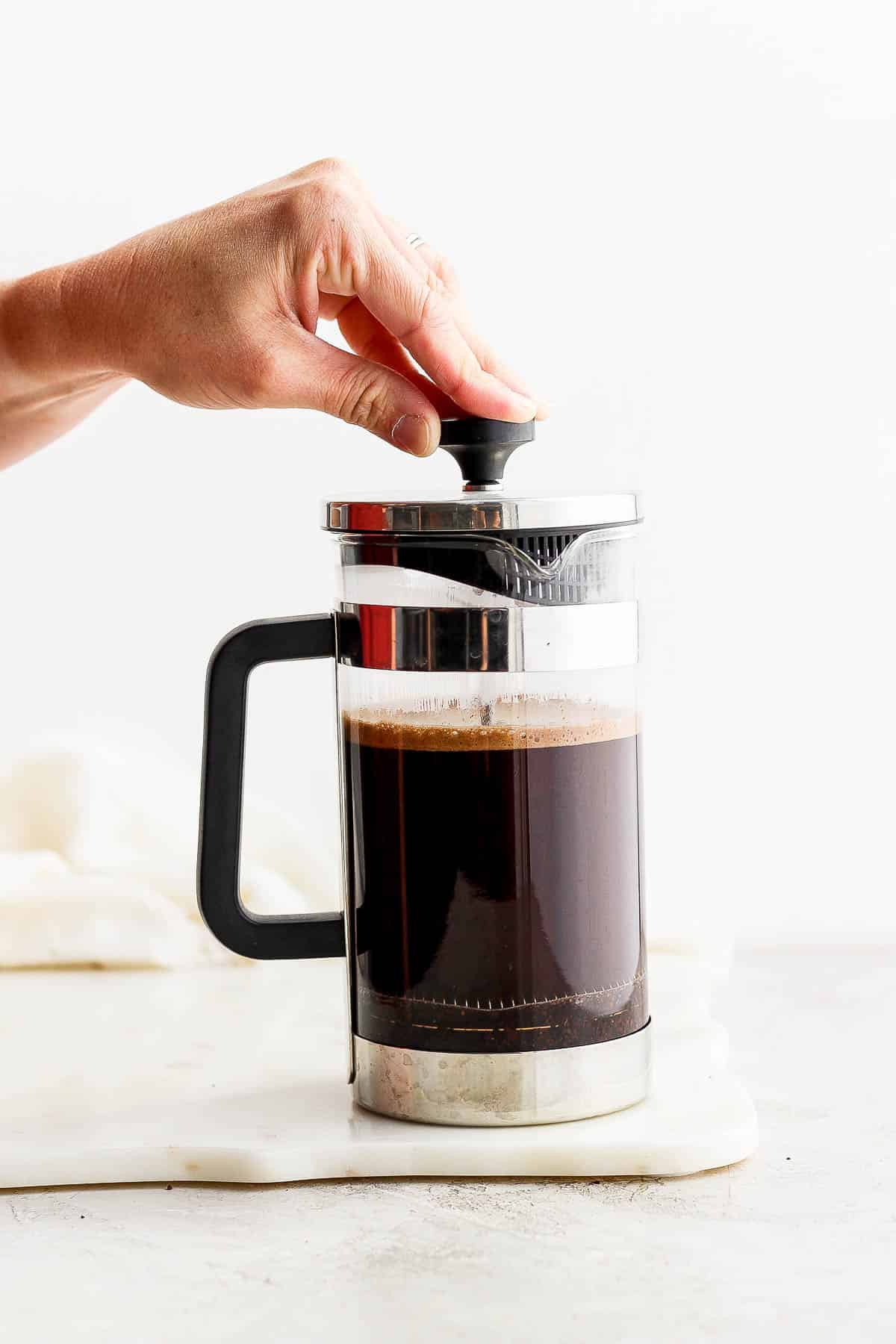
How to use a French Press (Simple + Easy) - The Wooden Skillet

Everything you need to know to brew great pour over coffee - Perfect Daily Grind

3 Ways to Prepare Filter Coffee - wikiHow
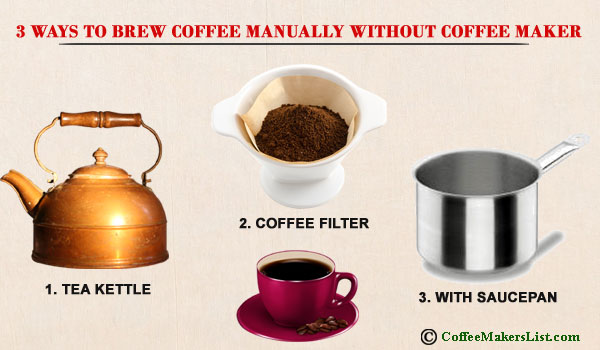
How to Make Perfect Coffee without a Coffee Maker?
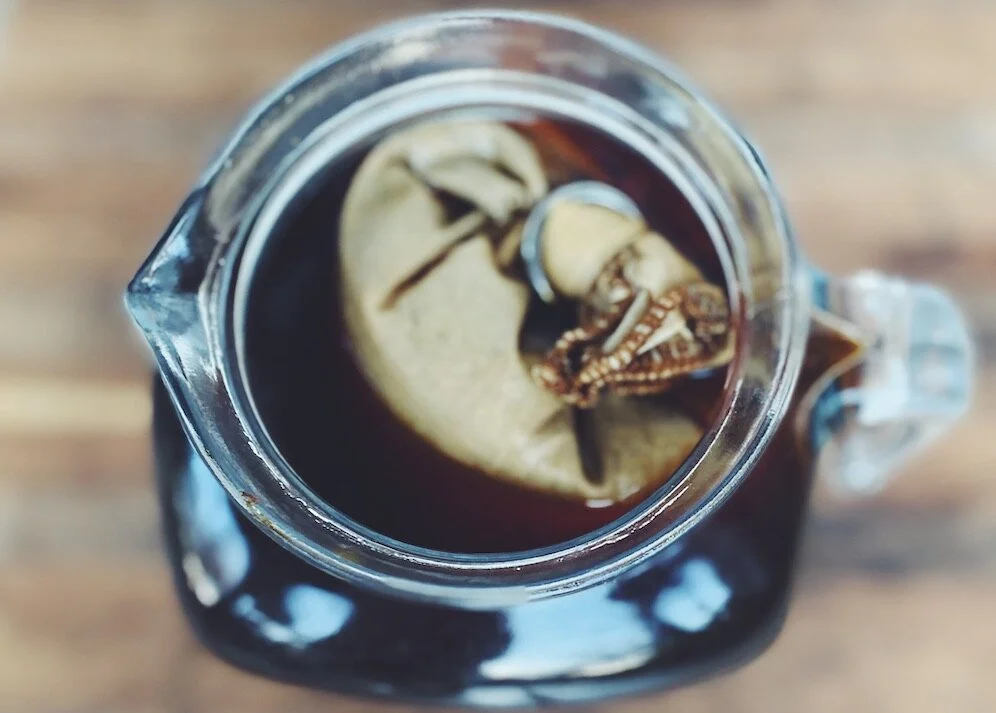
Cold Brew Coffee 101—Your Complete Guide to the Best Brew-CoffeeSock
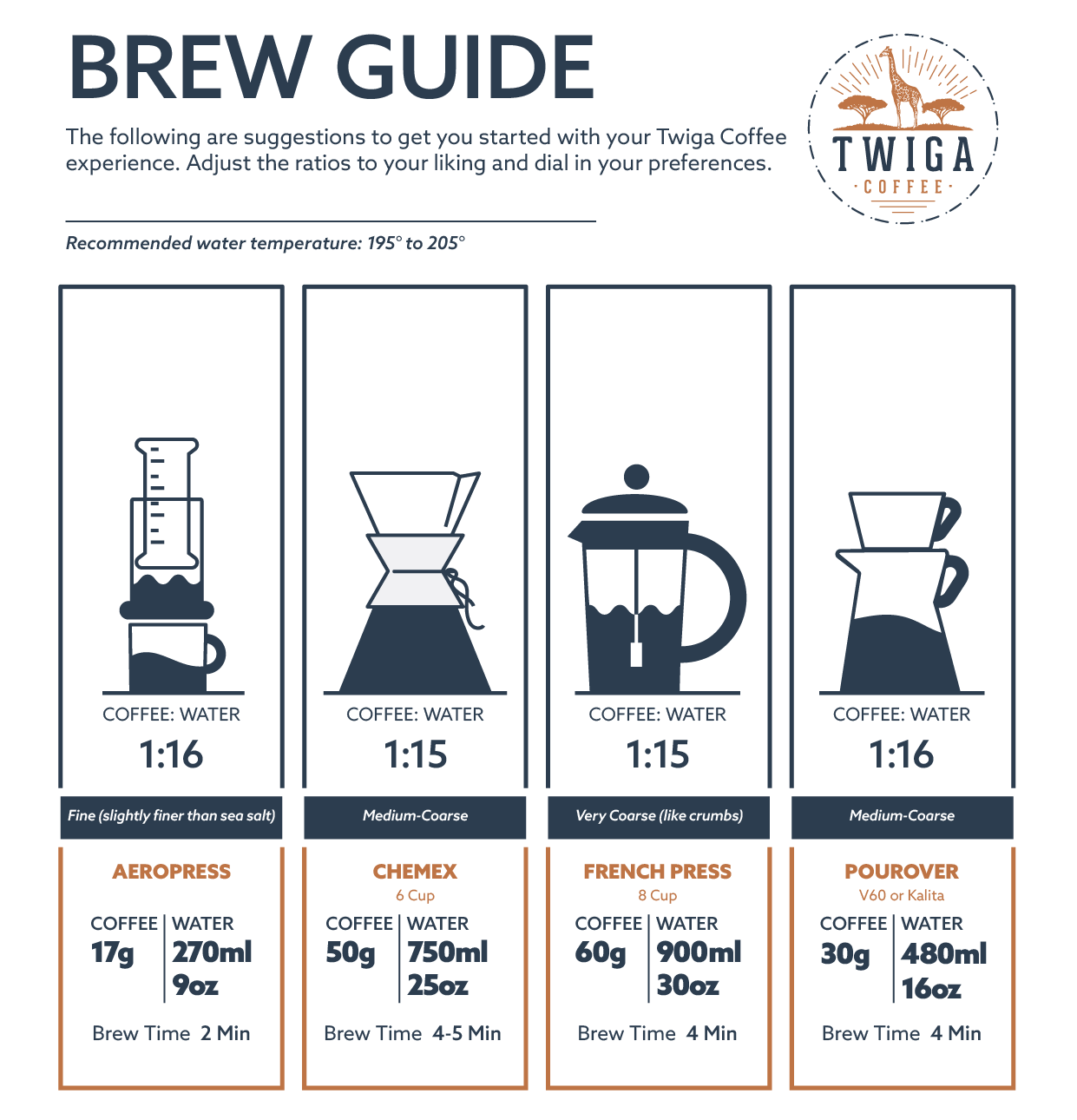
BREW GUIDE – Twiga Coffee
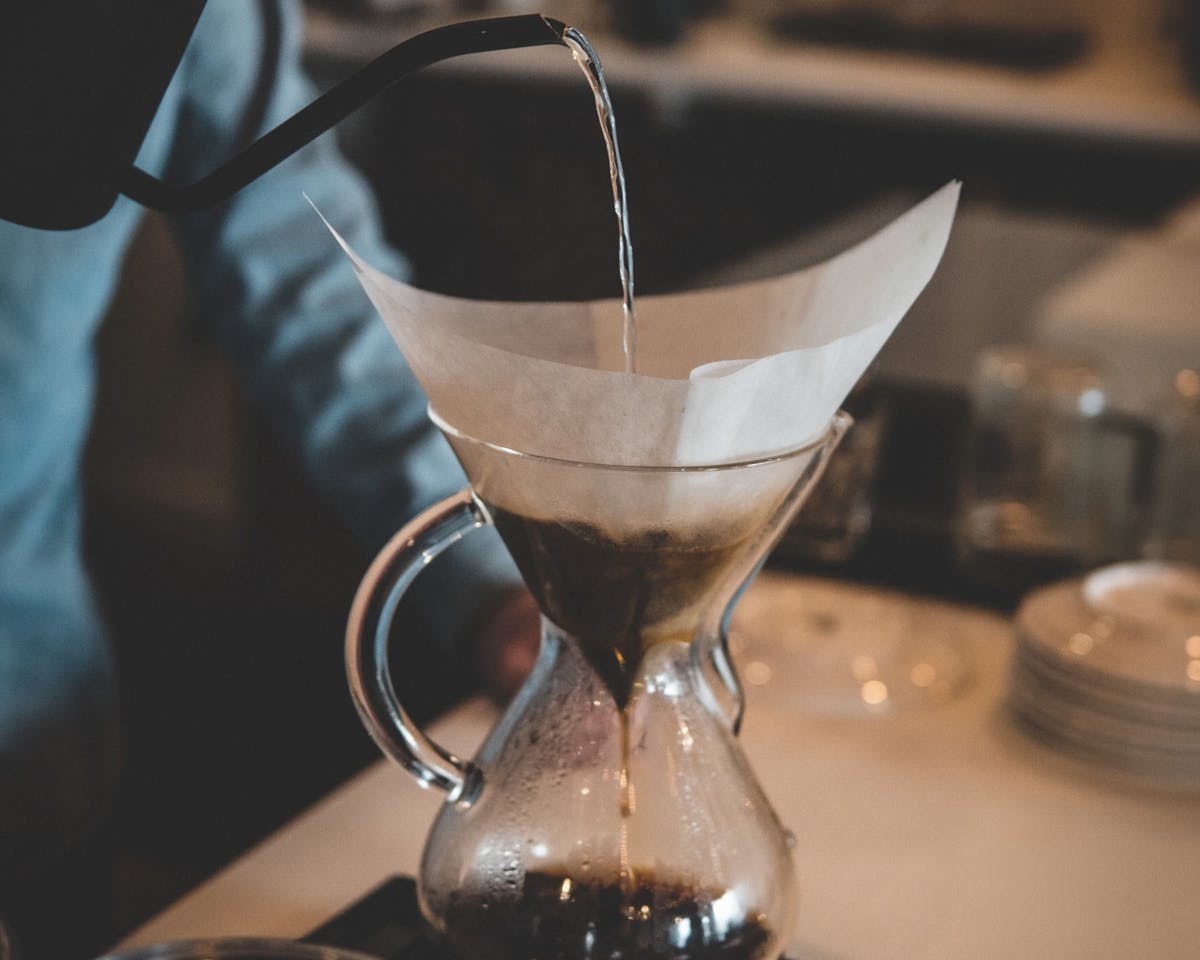
How To Make Coffee Without A Coffee Maker: Six Easy Methods
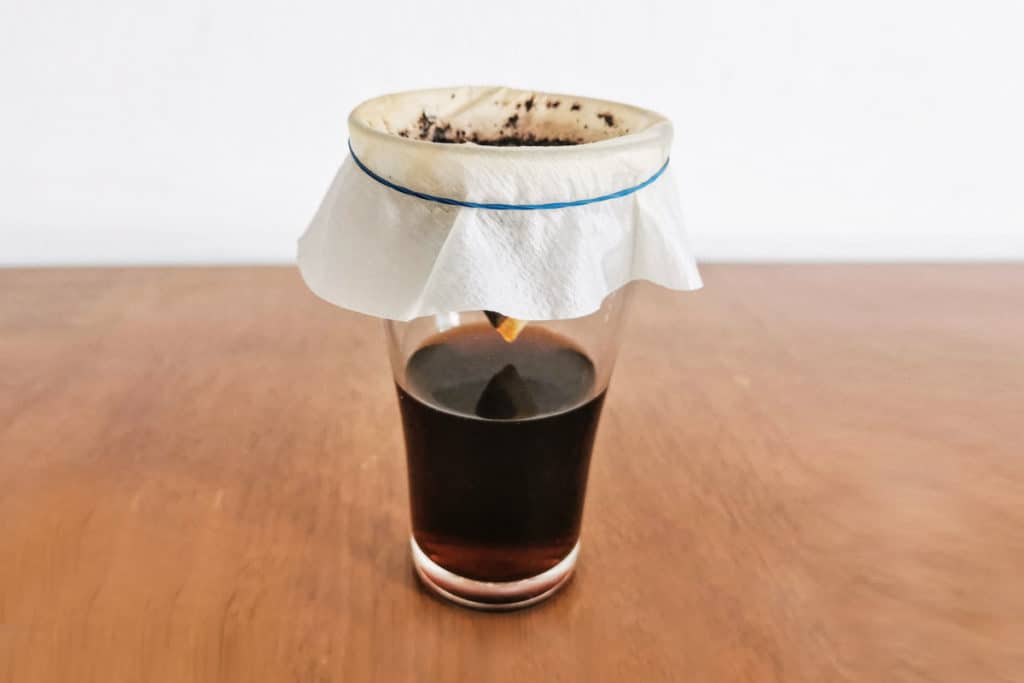
How to Make Coffee Without a Coffee Maker - European Coffee Trip
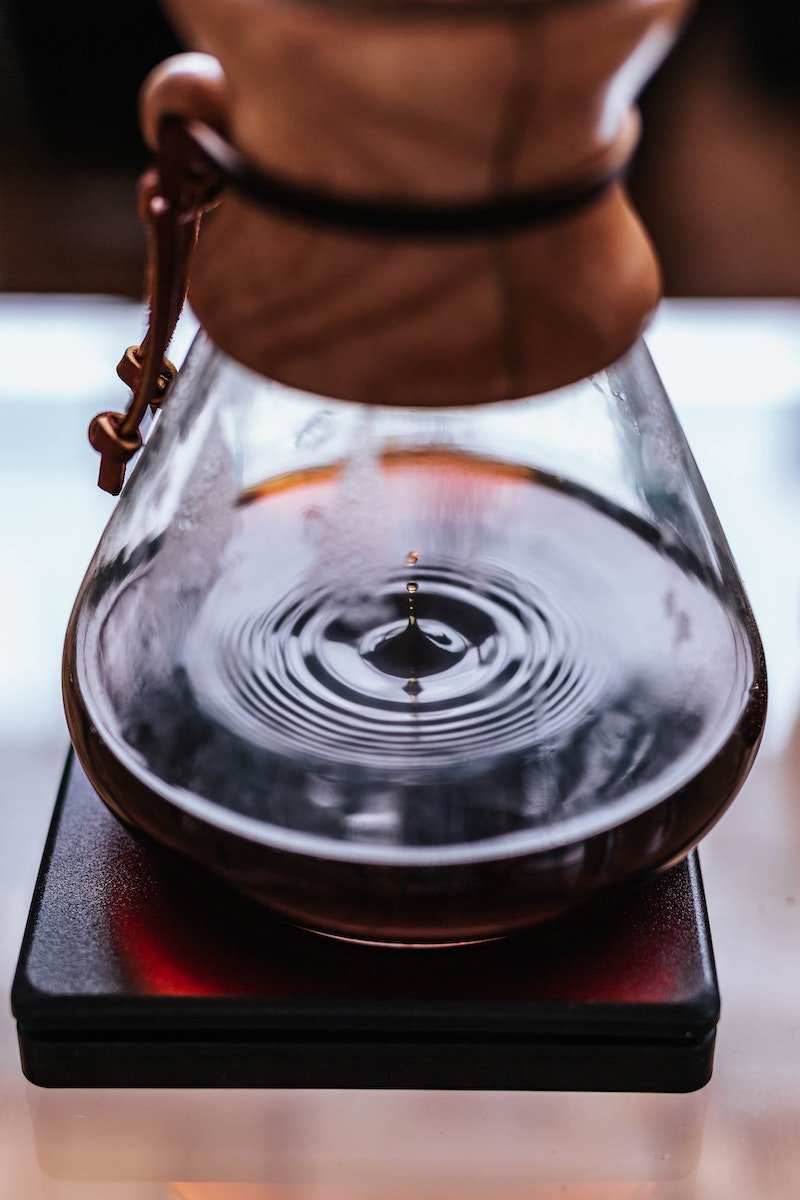
How Do You Make Coffee Without a Filter — Coffee DRs Hornsby
